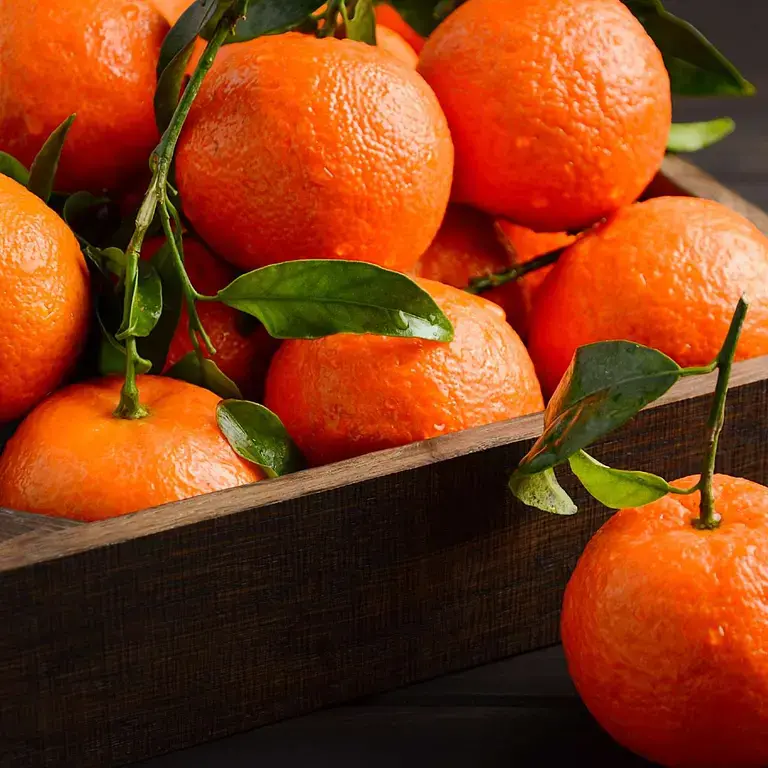Tangerines and clementines are both varieties of mandarin orange. Clementines have a slightly sweeter taste than tangerines, are a brighter orange colour, and have a smoother skin, which is easier to peel. Tangerines are larger and flatter in shape, with an uneven ‘pebbly’ texture. The easiest way to tell the difference is to hold the fruit in your hand. If it feels rough, it’s a tangerine, if it feels smooth, it’s a clementine.
What is a Clementine?
Clementines are the smallest variety of mandarin orange. They are seedless, with a sweet taste, and soft, easy to peel skin, making them the perfect healthy snack for kids. Because of this they are often marketed at children, with friendly brand names such as ‘Cuties’ or ‘Sweeties’.
The clementine is a spontaneous hybrid, meaning it is the product of two different plants interbreeding naturally, without human interference. It was discovered in Misserghin, Algeria, at the turn of the twentieth century, growing in the orphanage garden of French Missionary Brother Clément Rodier, after whom it takes its name.
These days clementines are mainly grown in China, Spain, Morocco and California. Their small size means they can be fragile and difficult to grow, so they might sometimes be difficult to track down in stores. In the United States, they are in season between November and April.
What is a Tangerine?
Tangerines are a slightly bigger variety of mandarin, with a flavour that is tart compared to a clementine. However, they are still smaller, sweeter and easier to peel than most oranges. They have a distinctive, pebbly skin and flatter shape. In the United States, they are often referred to as ‘mandarins’, and while this is technically true, they are only one of several different varieties of mandarin.
The tangerine is a much older variety of mandarin. It originated in East Asia, and has been cultivated in China and Japan for over 3,000 years. The fruit was transported to Europe and the USA via the port of Tangiers, in Morocco, which is where it gets its name. It is now widely grown in the USA, preferring the warmer climates of states like California, Arizona, Texas, and particularly Florida. It is in season a little earlier than the clementine, and can usually be found in stores from October to April.
There are various different types of tangerine, including the iconic Dancy tangerine, commonly known as the Christmas Orange, which comes into peak season in December, and was often included in children’s Christmas stockings as a seasonal treat. Tangerine hybrids are also popular, including the tangelo, a tangerine-pomelo hybrid, and the tangor, a tangerine-orange hybrid also known as the Temple Orange or the Royal Orange.
Mandarin vs Tangerine vs Clementine
Mandarins are a type of citrus fruit, similar to an orange, and often referred to as ‘mandarin oranges’. However, mandarins are typically smaller, with an oblate shape - meaning they are flat at the top and bottom - whereas oranges are more rounded. They have a sweeter, stronger taste than oranges, and can be used to add natural, juicy sweetness to a variety of recipes. We love these fresh, fragrant mandarin cupcakes, and this creamy mandarin cheesecake, with a chewy muesli base and juicy mandarin topping. Candied mandarin slices make a tangy and sophisticated party favour, or, for a sweet treat on your toast at breakfast time, why not try this easy, three-ingredient mandarin jam?










